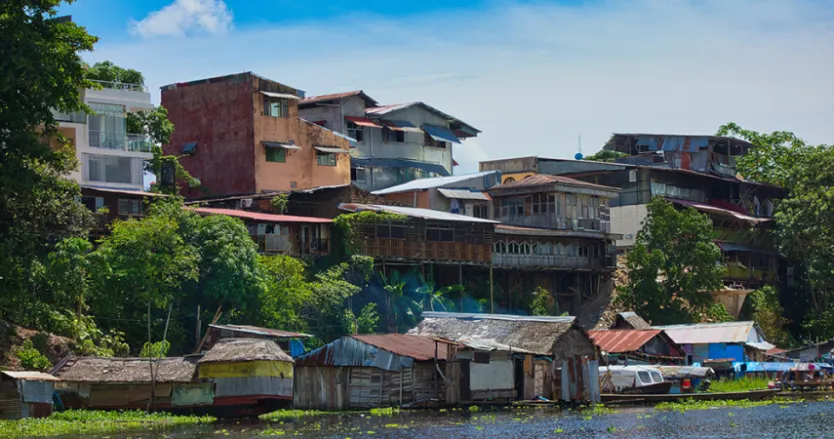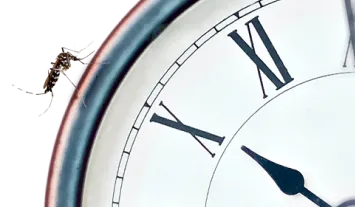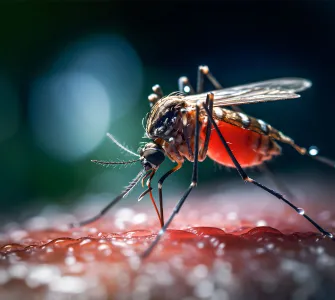Peru 2023 dengue outbreak


Please note the below example of Peru is not representative of the entire pool of countries where dengue can be present. Outbreak characteristics and responses are highly variable in dengue endemic countries resulting in different experiences from one region to the next.1
Peru’s worst dengue outbreak to date, in 2023, resulted in a state of emergency being declared in most of its 25 regions.2,3 This outbreak, which occurred during a time of political instability, greatly strained the healthcare system in some parts of the country.2,4,5
Peru’s dengue cases have been rising year-on-year in recent times6

Where
Peru; the North-Western region, Piura, was the worst affected3
The numbers as reported in September 2023
250,000 infections, 419 deaths4
The contributing causes
Increased rainfall and flooding resulting from a cyclone, as well as warmer than usual surrounding ocean waters due to El Niño (This natural climate phenomenon or weather pattern fuels tropical cyclones in the Pacific, boosting rainfall and flood risk within the region)6,7
This meant there were more pools of water available (than usual) for dengue-carrying mosquitoes to reproduce in6
The impact
Some of the sick had to be cared for outside hospitals, in motorcycle taxis and on the street2
Emergency wards were constructed in tents on sports fields. Many patients had no choice but to stay at home9
Up to 90% of medical facilities in Piura city were under resourced and understaffed.4 For example, one hospital reported that 80 patients were being treated per day, overwhelming their capacity of 30 beds, and test results took up to 20 days to process4
Long queues at hospital pharmacies meant some patients did not wait to get medicines, opting instead to self-treat8
“Everyone I knew got it.”
– Dengue patient8
The response
Government measures to tackle the outbreak included fumigation to kill baby Aedes aegypti mosquitoes, and campaigns to encourage residents to use mosquito nets and to avoid having open water containers (where mosquitoes can lay eggs)4
Did public policy decisions affect the response to the dengue epidemic?
“…halt of prevention work prior to the rainy season due to the political and social crisis… contributed to a perfect storm.”
– Antonio Quispe, epidemiologist/former health minister advisor5
Looking ahead
With dengue cases in Peru showing no signs of slowing down, a strong, public response is as important as ever in fighting this disease
“Public health agencies can prepare for and respond to dengue outbreaks by evaluating and supporting implementation of effective vector control methods and vaccines, strengthening dengue surveillance, and reinforcing clinical management training to improve patient outcomes.”
– Centers for Disease Control and Prevention (CDC)10
References
Brady OJ, et al. Epidemics. 2015;11:92-102.
Daily Telegraph. Available at: https://www.telegraph.co.uk/global-health/science-and-disease/perus-health-minister-steps-down-as-dengue-death-toll-jumps/. Accessed November 2023.
Daily Telegraph. Available at: https://www.telegraph.co.uk/global-health/science-and-disease/dengue-peru-national-emergency-el-nino-climate-change/. Accessed November 2023.
Daily Telegraph. Available at: https://www.telegraph.co.uk/global-health/science-and-disease/peru-dengue-outbreak-latest-treatment-medicine-deaths/. Accessed November 2023.
Daniels JP. Lancet. 2023;402(10396):93.
Reuters. Available at: https://www.reuters.com/world/americas/el-nino-rains-intensify-record-dengue-outbreak-peru-2023-06-08/. Accessed November 2023.
BMJ. BMJ 2023;381:p143. Available at: https://www.bmj.com/content/381/bmj.p1431/rr Accessed November 2023.
NPR. Available at: https://www.npr.org/sections/goatsandsoda/2023/06/21/1183490107/peru-is-reeling-from-record-case-counts-of-dengue-fever-whats-driving-the-outbreak. Accessed November 2023.
The Guardian. Available at: https://www.theguardian.com/global-development/2023/jun/13/hundreds-of-families-mourn-in-peru-as-children-fall-victim-to-dengue-outbreak. Accessed November 2023.
Centers for Disease Control and Prevention. Available at: https://www.cdc.gov/mmwr/volumes/73/wr/mm7304a4.htm#. Accessed January 2024.


























